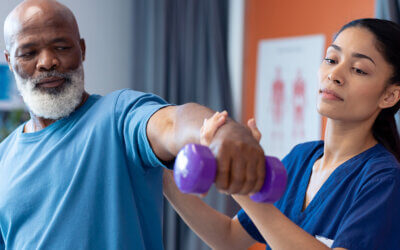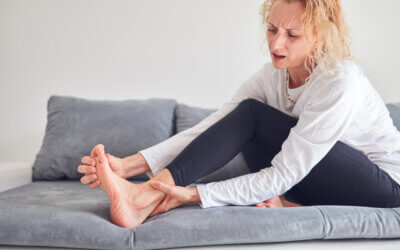A person’s balance is affected by many factors, and some of these factors include the muscles, joints, inner ear and eyes. As people age, any or all of these factors can degrade. This tends to happen slowly over many years, but it can also happen more rapidly because of an injury or medical condition. Balance training for seniors is a type of physical therapy that’s designed to help you improve your balance. Often, this therapy includes many therapeutic exercises, and there are two exercises that could be particularly helpful for you.
- Eye tracking
The movement of your eyes can be enough to set off vertigo and other balance issues in older adults. For this reason, balance training for seniors typically includes exercises to help your vision and balance at the same time. An example of such an exercise is eye tracking.
The first few times you try the eye tracking exercise, you may want to stay seated, and this will help ensure that you don’t fall down if you get dizzy during the exercise. To get into the exercise’s starting position, sit in a stable chair with your back straight. Your head should be facing forward. From this starting position, extend your pointer finger on your right hand and raise your hand in front of you so that it’s centered in your field of vision.
Slowly move your finger to the right as far as you can, and as you move it, follow it with your eyes only. Next, return your finger to the center while still following it with your eyes. Continue to follow these steps while moving your finger to the left, up and down. Make sure to move slowly at first since the eye movements could trigger vertigo or other balance issues.
- Toe lifts
Balance training for seniors can also be designed to help improve the strength of balancing muscles in your legs. With this goal in mind, your therapist might show you how to do an exercise called toe lifts.
To begin this exercise, place your hands on a kitchen counter to help maintain your balance. As an alternative, you can also hold on to the back of a stable chair. Finish getting into the toe lift starting position by standing up as straight as possible and placing your feet about hip width apart. Once you’re in this starting position, slowly push yourself up on your toes. At the top of the movement, try to hold yourself up for about three seconds and then slowly lower your heels back to the floor. Repeat these steps until you’ve completed 15 to 20 repetitions. As the exercise becomes easier, you can wear ankle weights to make it more challenging.
Continuum Wellness offers balance training for seniors
Have your balance issues led to feelings that you’ve lost your independence? Continuum Wellness wants to help you regain as much independence as possible, and it all starts with a free screening. This service allows us to determine the source of your balance issues. The information we gather during screenings allows us to build personalized senior balance training plans, and these plans can include therapy methods such as:
- Therapeutic exercises
- Joint mobilization
- Manual therapy
- Occupational therapy
Take the next step to get our help with your balance issue. Contact our team today for more information or to schedule an initial appointment.



